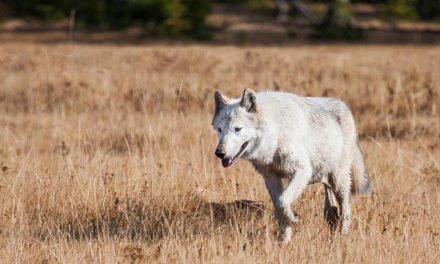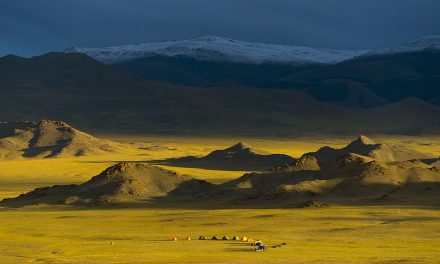
In preparation for New Year’s Eve 2017, the numerals “one” and “seven” arrive in New York, ready to be hoisted above Times Square. ©Countdown Entertainment, LLC
Traditionally, throughout the world on New Year’s Eve, we all join in the singing of “Auld Lang Syne.” The song, whose title roughly translates as “for old times’ sake,” is appropriate for the end of the year because it evokes nostalgia for the past and a longing to preserve longtime friendships.
According to the website scotland.org, poet Robert Burns sent the words to “Auld Lang Syne” to the Scots Musical Museum in 1788. Although it’s an ancient song, Burns wrote to the institution that he was the first to record the lyrics on paper. One phrase pointedly asks whether or not our old friends should be “brought to mind.”
So, on this upcoming New Year’s Eve 2016, I think it would be fitting and fun to take a look at some of our most venerable acquaintances on Earth—just for old times’ sake.

The oldest-known nonclonal tree in the world resides in California and is a bristlecone pine, such as this one in Bryce Canyon National Park, Utah. ©IvyMike, flickr
Tenacious trees
Recently, in an August 2016 news release, Sweden’s Stockholm University announced that the oldest living inhabitant in Europe is now believed to be a Bosnian pine, found in the highlands of northern Greece. More than 1,075 years old, the tree was discovered by a group of researchers from the University of Arizona in the U.S., the University of Mainz in Germany and Stockholm University.
In order to determine the Bosnian pine’s age, researchers removed a core of wood from inside the tree to count the growth rings. Although they tallied 1,075, they weren’t able to reach the center of the tree, which means there are more, unnumbered rings. The tree stands in like company; it’s surrounded by other pines that have lived a thousand years or more.
A 9,000-year-old Norway spruce, Old Tjikko, located on Fulufjället Mountain of Dalarna province in Sweden, is often touted as being the oldest living tree. However, Old Tjikko is a clonal tree, which means that it repeatedly reproduces asexually by cloning itself. The tree’s trunk is actually only a few hundred years old; but after each trunk dies, a new one emerges from the same rootstock.

In Antarctica, moss is only found on a few remote islands and headlands. The oldest and deepest moss banks are on Elephant Island. ©University of Exeter, flickr
The United States claims the oldest-known nonclonal tree in the world. It’s a bristlecone pine called Methuselah, and it has stood in California for 4,800 years. The U.S. Forest Service will not share photos of this elder: according to an article in The New York Times, the tree did not make it through several thousand years of civilization only to be either harassed by a horde of Instagrammers eager to carve their names in its bark or assassinated by a reckless researcher.
Ancient Antarctic moss
A plant far smaller than trees but far older than the oldest of them, however, survives in Antarctica. On Elephant Island, there’s a moss that began to grow 5,500 years ago. The moss was one of the foods eaten by the stranded Shackleton Expedition, which was shipwrecked on the island from April to August 1916.
Senior sharks
One hundred years later, in August 2016, the journal Science announced that a shark native to North Atlantic waters around Canada, Greenland and Iceland might be the longest-lived vertebrate on the planet. Greenland sharks, it is now thought, may live to be more than 400 years old.

The secretive Greenland shark has now been named the longest-living vertebrate animal. ©NOAA Photo Library
According to the Quebec Shark Observatory, Greenland sharks are the second-largest carnivorous sharks after great whites. Reaching up to 24 feet in length, Greenland sharks are rarely observed because they spend much of their time in water too deep for most scuba divers. The first underwater photos of a live Greenland shark were taken in the Arctic in 1995. The first video images of the animal swimming freely in its natural environment were not obtained until 2003.
Greenland sharks are the only sharks that can tolerate Arctic temperatures year-round. Inadvertently caught in unrelated research expeditions, about 28 Greenland sharks have been radiocarbon-dated by researchers in an effort to determine their age. It was one of those sharks, a female, that was found to be in her fourth century.
Ming, the mature clam, no more
Ten years before Greenland sharks took over the title of longest-lived vertebrate, a group of researchers working in Iceland discovered what they thought looked like a really old, quahog clam. Curious as to just how aged it was, they decided to open the clam up and count its growth rings along the hinge ligament. They were surprised to learn that the clam was 405 years old.

Ming was a 507-year-old quahog clam, also known as a round clam or hard-shell (or hard-shelled) clam. ©Ken Hammond, USDA
The now-dead clam was named Ming for the Chinese dynasty that ruled at the time it was born. It was later determined that not only had the researchers killed one of the oldest living animals in the world, they had made an erroneous measurement. Ming the clam was a full century older than they first calculated: it had prospered for 507 years.
A last, 2016 toast
Regarding all of these old things, there’s one fact that really stands out to me. None of them are human. They are of “other” natures—ones not responsible for rapid climate change; for air and water pollution; for dirty energy. But they do, however, share this planet with us.
Should such old acquaintances be forgotten, and never brought to mind? I hope not. As you indulge in your “cup of kindness” during this New Year’s Eve 2016, do take a moment to make a brief toast to all of our oldest acquaintances on Earth.

The African baobab tree is the oldest living flowering plant, with an average lifespan of 1,500 to 2,000 years. Native to Africa, this giant tree has a huge trunk that can measure up to 30 feet in diameter. While baobabs can withstand extreme weather conditions and prolonged periods without water, they are endangered due to climate change and deforestation. ©Rod Waddington, flickr
And, please, remember them as we forge ahead into a new year and an uncertain environmental future.
Here’s to finding your true places and natural habitats,
Candy


































